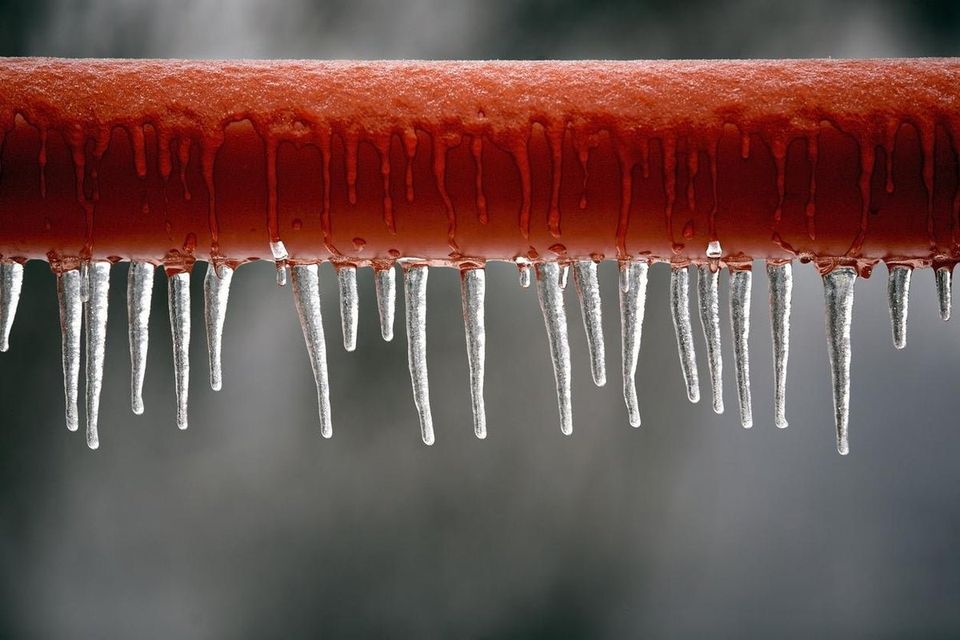Key Methods for Avoiding Frozen Pipes in Cold Weather
Key Methods for Avoiding Frozen Pipes in Cold Weather
Blog Article
The article listed below about Helpful Tips to Prevent Frozen Pipes this Winter is immensely captivating. Read it for your own benefit and figure out what you think about it.

Cold weather can damage your pipes, specifically by freezing pipelines. Here's how to prevent it from taking place and what to do if it does.
Intro
As temperatures decline, the threat of frozen pipelines boosts, potentially bring about expensive fixings and water damage. Comprehending exactly how to stop frozen pipes is important for home owners in cold climates.
Prevention Tips
Protecting prone pipelines
Cover pipelines in insulation sleeves or make use of warmth tape to shield them from freezing temperatures. Focus on pipelines in unheated or external locations of the home.
Home heating techniques
Maintain indoor rooms effectively heated up, especially locations with pipes. Open up cabinet doors to allow cozy air to circulate around pipes under sinks.
How to recognize frozen pipes
Try to find decreased water circulation from taps, unusual smells or noises from pipelines, and visible frost on subjected pipelines.
Long-Term Solutions
Structural changes
Consider rerouting pipes away from outside wall surfaces or unheated locations. Add added insulation to attics, cellars, and crawl spaces.
Upgrading insulation
Buy high-grade insulation for pipes, attic rooms, and walls. Appropriate insulation helps preserve regular temperatures and lowers the risk of frozen pipelines.
Protecting Outside Pipes
Yard hose pipes and outside taps
Separate and drain garden pipes prior to winter. Install frost-proof spigots or cover outside taps with shielded caps.
Recognizing Frozen Pipes
What causes pipes to freeze?
Pipes freeze when exposed to temperatures below 32 ° F (0 ° C) for extended periods. As water inside the pipes freezes, it increases, taxing the pipeline wall surfaces and possibly triggering them to rupture.
Risks and damages
Icy pipelines can cause water interruptions, building damages, and costly repair services. Burst pipes can flooding homes and create considerable architectural damages.
Indications of Frozen Piping
Recognizing frozen pipes early can prevent them from rupturing.
What to Do If Your Pipelines Freeze
Immediate actions to take
If you think frozen pipelines, keep taps open up to ease stress as the ice thaws. Use a hairdryer or towels taken in hot water to thaw pipelines gradually.
Verdict
Avoiding icy pipes requires positive measures and quick feedbacks. By comprehending the reasons, signs, and preventive measures, home owners can protect their plumbing throughout winter.
5 Ways to Prevent Frozen Pipes
Drain Outdoor Faucets and Disconnect Hoses
First, close the shut-off valve that controls the flow of water in the pipe to your outdoor faucet. Then, head outside to disconnect and drain your hose and open the outdoor faucet to allow the water to completely drain out of the line. Turn off the faucet when done. Finally, head back to the shut-off valve and drain the remaining water inside the pipe into a bucket or container. Additionally, if you have a home irrigation system, you should consider hiring an expert to clear the system of water each year.
Insulate Pipes
One of the best and most cost-effective methods for preventing frozen water pipes is to wrap your pipes with insulation. This is especially important for areas in your home that aren’t exposed to heat, such as an attic. We suggest using foam sleeves, which can typically be found at your local hardware store.
Keep Heat Running at 65
Your pipes are located inside your walls, and the temperature there is much colder than the rest of the house. To prevent your pipes from freezing, The Insurance Information Institute suggests that you keep your home heated to at least 65 degrees, even when traveling. You may want to invest in smart devices that can keep an eye on the temperature in your home while you’re away.
Leave Water Dripping
Moving water — even a small trickle — can prevent ice from forming inside your pipes. When freezing temps are imminent, start a drip of water from all faucets that serve exposed pipes. Leaving a few faucets running will also help relieve pressure inside the pipes and help prevent a rupture if the water inside freezes.
Open Cupboard Doors
Warm your kitchen and bathroom pipes by opening cupboards and vanities. You should also leave your interior doors ajar to help warm air circulate evenly throughout your home.

We had been shown that article about Winter Plumbing Precautions: Preventing Frozen Pipes through a pal on a different website. Enjoyed our content? Please share it. Help another person find it. Thanks for going through it.
Free Quote Report this page